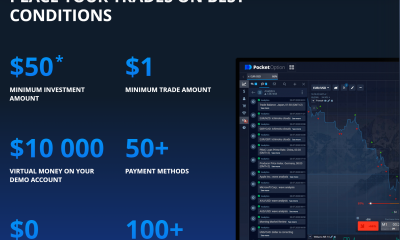Commodities
OPEC+ producers extend oil output cuts to second quarter
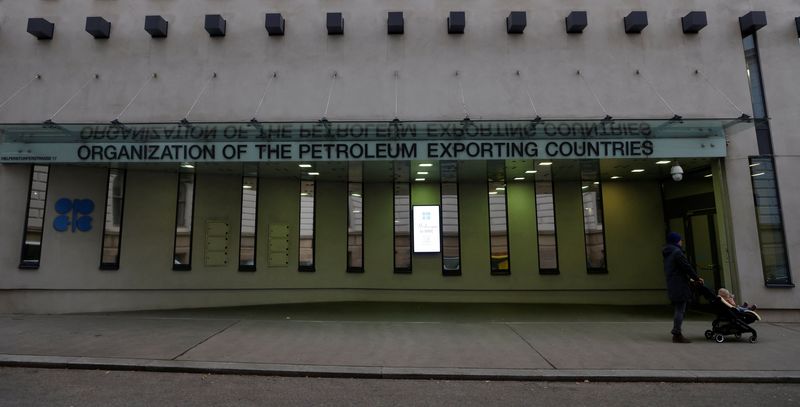
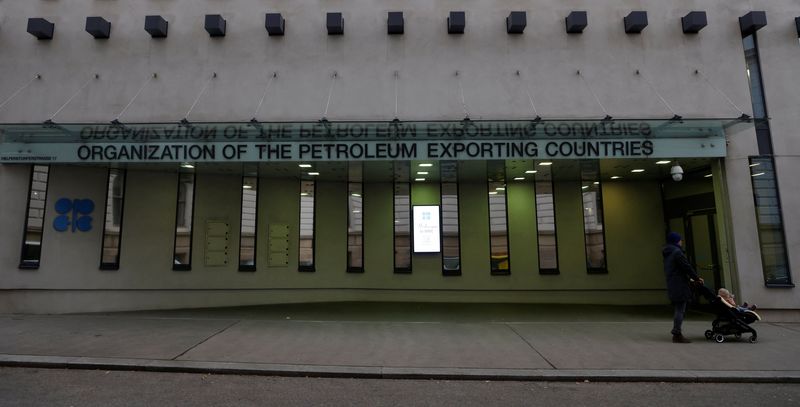
© Reuters. A view of the entrance to the Organization of the Petroleum Exporting Countries (OPEC) headquarters in Vienna, Austria, November 30, 2023. REUTERS/Leonhard Foeger
2/2
By Maha El Dahan and Alex Lawler
DUBAI (Reuters) -OPEC+ members led by Saudi Arabia and Russia agreed on Sunday to extend voluntary oil output cuts of 2.2 million barrels per day into the second quarter, giving extra support to the market amid concerns over global growth and rising output outside the group.
Saudi Arabia, the de facto leader of the Organization of the Petroleum Exporting Countries (OPEC), said it would extend its voluntary cut of 1 million barrels per day (bpd) through the end of June, leaving its output at around 9 million bpd.
Russia, which leads OPEC allies collectively known as OPEC+, will cut oil production and exports by an extra 471,000 bpd in the second quarter. Russian Deputy Prime Minister Alexander Novak gave new figures showing that cuts from production will make up a rising proportion of the measure.
Oil has found support in 2024 from rising geopolitical tensions and Houthi attacks on Red Sea shipping, although concern about economic growth has weighed. While OPEC+ was widely expected to keep the cuts in place, Russia’s announcement could bolster prices further.
“There was a surprise from Russia,” said UBS analyst Giovanni Staunovo, who called the developments largely expected.
“If the Russian cuts are fully implemented additional barrels would be removed from the market. So that is a surprise move no one expected and could lift prices,” he added.
settled $1.64 higher, or 2%, at $83.55 a barrel on Friday, up more than 8% so far this year.
OPEC+ members announced the cuts individually on Sunday and OPEC later issued a statement confirming the 2.2 million bpd total. Saudi state news agency SPA said the cuts would be reversed gradually, according to market conditions.
“The decision sends a message of cohesion and confirms that the group in not in a hurry to return supply volumes, supporting the view that when this finally happens, it will be gradual,” analysts at investment bank Jefferies said in a report.
OIL SEEN OPENING HIGHER
OPEC+ in November had agreed to the voluntary cuts totalling about 2.2 million bpd for the first quarter, led by Saudi Arabia rolling over a cut it had first made in July.
“The rollover was anticipated but extending it to the end of the second quarter might come as a surprise,” said Tamas Varga of oil broker PVM. “The market is expected to open stronger.”
For the second quarter, Iraq will extend its 220,000 bpd output cut, UAE will keep in place its 163,000 bpd output cut and Kuwait will maintain its 135,000 bpd output cut, the three OPEC producers said in separate statements. Algeria also said it would cut by 51,000 bpd and Oman by 42,000 bpd.
Kazakhstan said it will extend its voluntary cuts of 82,000 bpd through the second quarter.
OPEC+ has implemented a series of output cuts since late 2022 to support the market amid rising output from the United States and other non-member producers and worries over demand as major economies grapple with high interest rates.
The total OPEC+ pledged cuts since 2022 stand at about 5.86 million bpd, equal to about 5.7% of daily world demand, according to Reuters calculations.
Sources told Reuters last week that OPEC+ would consider extending the latest round of output cuts into the second quarter, with one saying it was “likely”.
The oil demand outlook is uncertain for this year. OPEC expects another year of relatively strong demand growth of 2.25 million bpd, led by Asia, while the International Energy Agency expects much slower growth of 1.22 million bpd.
In a further headwind for OPEC+, the IEA also expects oil supply to grow to a record high of about 103.8 million bpd this year, almost entirely driven by producers outside OPEC+, including the United States, Brazil and Guyana.
Commodities
Oil set for weekly gain on signs of improving demand
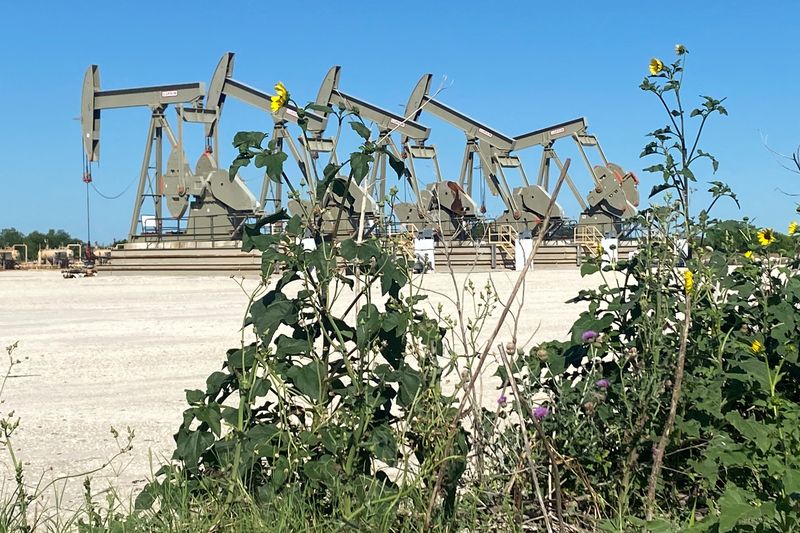
By Shariq Khan
NEW YORK (Reuters) – Oil prices rose in Asian trading hours on Friday, with global benchmark Brent set for its first weekly increase in three weeks on signs of improving global demand and slowing inflation in top oil consumer the United States.
prices rose 21 cents, or 0.3%, to $83.48 a barrel by 0018 GMT. U.S. West Texas Intermediate (WTI) crude futures rose 18 cents, or 0.2%, to $79.41 a barrel.
Brent futures are set to rise about 1% on a weekly basis, and WTI futures are set to gain 1.4%.
Recent declines in oil and refined products inventories at major global trading hubs have created optimism over oil demand growth, reversing a trend of rising stockpiles that had weighed heavily on prices in prior weeks. Through Thursday, Brent crude futures were down around 10% from this year’s peak of $92.18 a barrel on April 12.
U.S. oil and fuel inventories fell last week, while Singapore’s middle distillate fuel stocks dropped to a near three-month low this week. In Europe’s Amsterdam-Rotterdam-Antwerp trading hub, gasoline stocks were down 7.5% in the week to Thursday, data from consultancy Insights Global showed.
Recent economic indicators from the United States have fed into the optimism over global demand. U.S. consumer prices rose less than expected in April, data showed on Wednesday, boosting expectations of lower interest rates in the country.
Those expectations were further bolstered by data on Thursday that showed a stabilizing U.S. job market.
remove ads
.
Lower interest rates could help soften the U.S. dollar, which would make oil cheaper for investors holding other currencies and drive demand.
“Financial markets now have placed the most bets on a September interest rate cut by the Federal Reserve, which would continue to temper the dollar strength and shift that strength over to commodities and equities,” StoneX oil analyst Alex Hodes said on Thursday.
Commodities
Goldman Sachs discusses what’s next for natural gas prices
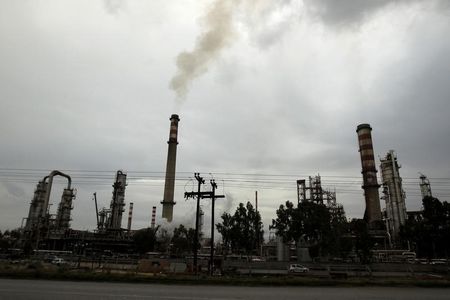
Over the past three weeks, US prices have surged 30% to above $2.50 per million British thermal units (mm/BTU), fueled by production declines and increased feedgas demand for liquified natural gas (LNG) exports.
Moreover, recent producer cuts, maintenance events, and Freeport LNG’s normalization of gas demand post-outage have contributed to this rise. Cheniere’s announcement of no heavy maintenance for its liquefaction trains this year also supports higher prices.
In a Thursday note, Goldman Sachs strategists said the return of gas prices above $2/mmBtu aligns with their expectations, as production curtailments “would ultimately lead to lower storage congestion risks for this summer.”
“That said, we see only limited further upside from current levels, with stronger gas prices risking a return of congestion concerns,” they added.
Goldman notes that prices above $2/mmBtu reduce gas competitiveness compared to coal, with a $0.50/mmBtu increase potentially cutting gas demand by 1 billion cubic feet per day (Bcf/d), especially in shoulder months.
Moreover, higher prices may prompt the restart of previously shut-in wells. EQT (ST:), the largest producer in the Appalachia region, indicated it would resume production if prices sustainably exceed $1.50/mmBtu. And while Appalachia prices haven’t risen as much as NYMEX, the local hub has averaged $1.44/mmBtu month-to-date, up 10¢ from last month, strategists highlighted.
Elsewhere, European gas prices have also risen this summer, though less sharply than in the US.
Title Transfer Facility (TTF) prices increased 18% over the past three months to around 30 euros per megawatt-hour (MWh), holding steady in May.
remove ads
.
However, unlike the US market, this rally lacks fundamental support, with Northwest (NW) European gas storage at record-high levels, Goldman strategists pointed out.
“To be sure, NW European LNG imports have remained weak relative to last year – and are likely to get weaker in the coming weeks owing to a seasonal decline in global LNG production, exacerbated by outages at Australia’s Gorgon export project,” they said.
“Going forward, we expect healthy non-European demand for LNG to continue to incentivize a decline in European LNG imports vs last year,” they continued.
Commodities
Gold prices trim some weekly gains on tempered rate cut hopes

Investing.com– Gold prices fell slightly on Friday, trimming some of their gains for the week as comments from a slew of Federal Reserve officials offered a more sobering outlook on interest rate cuts.
The yellow metal had risen to nearly $2,400 an ounce this week in the immediate aftermath of some soft U.S. economic readings. But it pulled back from these levels on Thursday and Friday.
steadied at $2,377.40 an ounce, while expiring in June fell slightly to $2,381.10 an ounce by 00:19 ET (04:19 GMT).
Gold retreats as Fed officials downplay rate cuts, but weekly gains due
The yellow metal fell on Thursday after a string of Fed officials cautioned against bets on immediate reductions in interest rates.
Several members of the central bank’s rate setting committee said the central bank will need much more convincing that inflation was coming down beyond a marginally soft inflation reading for April.
This saw traders begin pricing out some expectations for a rate cut in September. The and also rebounded from earlier losses this week.
Still, some softer-than-expected readings put gold on course for a 0.7% weekly gain.
The yellow metal was also in sight of a record high of above $2,430 an ounce, although it appeared unlikely the level would be met in the near-term.
Other precious metals retreated on Friday, but were set for bumper weekly gains. fell 0.2% but were trading up 6.2% for the week, while fell 0.4% but were up 4.5% this week.
remove ads
.
Copper mixed amid middling China cues
Among industrial metals, one-month copper futures tumbled from two-year highs tracking middling economic data. But three-month copper futures pushed higher and were set for a stellar week as markets bet on tighter supplies and an eventual demand recovery in the coming months.
on the London Metal Exchange rose 0.6% to $10,445.0 a ton, while rose 0.3% to $4.8935 a pound.
Data from China on Friday painted a mixed picture of the economy. While grew more than expected, growth slowed and shrank at an accelerated pace. Growth in Chinese also slowed.
The readings presented a muddled outlook for the world’s biggest copper importer, as it rolled out more stimulus measures to shore up growth.
Three-month copper futures gained on the prospect of a demand recovery, and were up nearly 4% this week. They were also at two-year highs.

 Forex2 years ago
Forex2 years agoForex Today: the dollar is gaining strength amid gloomy sentiment at the start of the Fed’s week

 Forex2 years ago
Forex2 years agoHow is the Australian dollar doing today?

 Forex1 year ago
Forex1 year agoUnbiased review of Pocket Option broker

 Forex2 years ago
Forex2 years agoDollar to pound sterling exchange rate today: Pound plummeted to its lowest since 1985

 Cryptocurrency2 years ago
Cryptocurrency2 years agoWhat happened in the crypto market – current events today

 World2 years ago
World2 years agoWhy are modern video games an art form?

 Stock Markets2 years ago
Stock Markets2 years agoMorgan Stanley: bear market rally to continue

 Economy2 years ago
Economy2 years agoCrude oil tankers double in price due to EU anti-Russian sanctions

















